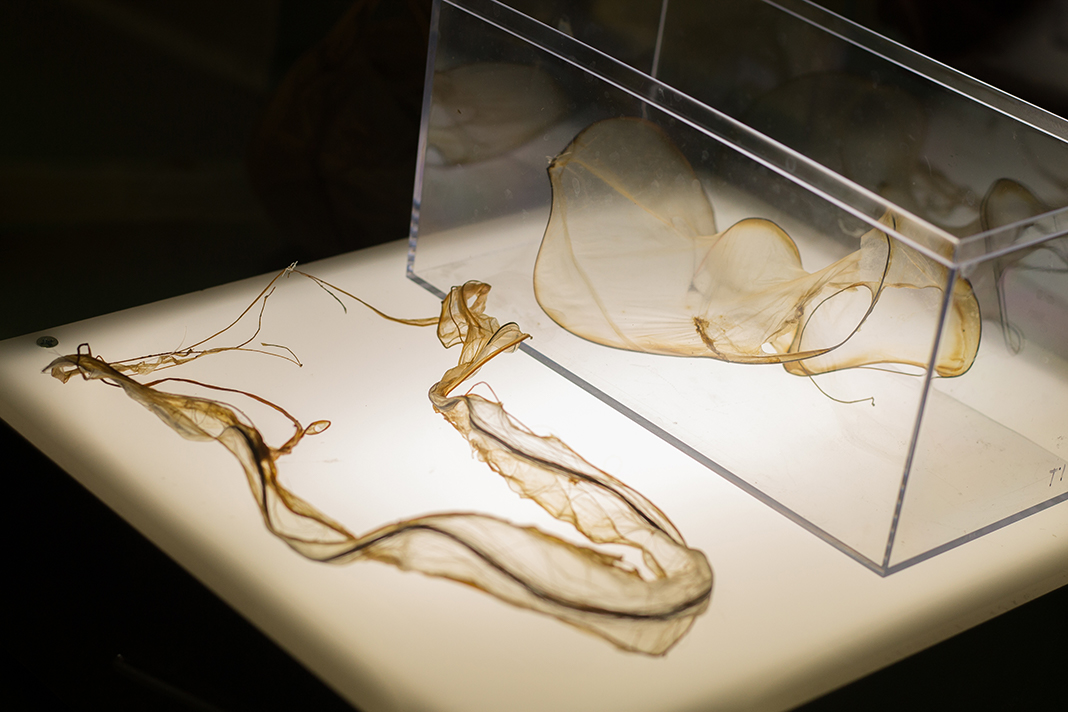Something Is Growing @ Pando
Editor’s note: Maru Garcia is a Pando Artist in Residence for 2020. She reports on her research.
What if all those plastic wrappers and bags weren’t petroleum-based, but could be grown like a plant? And like anything that grows, would be biodegradable? What if it also could be beautiful?
This is the vision I took to the Pando at Maryknoll campus in Monrovia where I was an artist in residence earlier this year. The location was ideal for research and creative focus, in a supportive environment that aims to rethink civilization with the Earth in mind, and includes a large wet lab!
During my first two weeks, I lived and worked full-time on the property. This allowed me to get research launched and my microscopic collaborators growing. I then cultivated the work with property visits twice a month. With the Coronavirus, I’ve had to curtail that, but look forward to relaunching when possible.
The focus of my residency was to explore concepts of biomimicry and biodesign. While both terms are related to the idea of observing and learning from nature, biodesign includes more than inspiration from nature; it includes the integration and even active participation of living organisms into the design process and outcome.
I was building on a previous project, where I worked with the culture that is responsible for the production of the very popular “Kombucha” drink. In that project (you can see more here), I was interested in exploring the idea of interspecies relationships — particularly, the integration of human and microbial culture.
The specific culture I’m focusing on is called “SCOBY” for short, which stands for “Symbiotic Culture Of Bacteria and Yeast.” As the name suggests, it’s a community of various microorganisms working together in symbiosis to allow the whole to live and develop. The culture results from the fermentation of sweet tea, which produces a film on the surface of the liquid.
Maru Garcia at work in the wet lab, Pando at Maryknoll, Monrovia. Photo by Aubrey Burgess.
Maru Garcia at work in the wet lab, Pando at Maryknoll, Monrovia. Photo by Aubrey Burgess.
The film is actually cellulose, the biopolimer that is also found in plants and widely used for the production of paper. The material has been studied as a substitute for plastic (think, “bio-plastic”) or even leather. With further research and development, it could in the future be used as an alternative.
Many artists and designers are incorporating SCOBY technology into their creations. As a bioartist and ecoartist, I also find a great source of inspiration here. As peculiar as it may sound, I also see it as a way to better connect with other organisms that, although not visible to the naked eye, are tangible through the slimy material (and the very intense aroma!) they produce. In my experience, this is a call to the senses in a space for trust and mutual and shared knowledge.
During my residency with Pando, I want to continue exploring the aesthetic and functional qualities of biomaterials. I find the lab/studio space perfect for working on “my experiments” as they are called by the community of Maryknoll Sisters living on campus.
It is this sense of community that extends from the human to the microscopic that allows me to say something is growing @ Pando!
